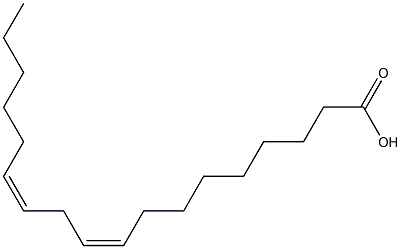Dill Oil
Synonym(s):Anethum graveolens
- CAS NO.:8006-75-5
- Molecular Weight: 0
- MDL number: MFCD00240704
- EINECS: 682-798-6
- Update Date: 2024-12-18 14:08:57
What is Dill Oil?
Chemical properties
Dill weed oil, which is the most important, is obtained by steam distillation of the dill weed (herb) before the fruits becomemature. Itsmain constituents are ??-phellandrene (10–20%), limonene (30–40%), carvone (30–40%), and the so-called (+)-dill ether (up to 10%). The latter is responsible for the typical organoleptic properties of the dill plant and, thus, of dill weed oil. Annually, ~150 t are produced mainly in the United States and Canada, smaller quantities come from Eastern Europe (Bulgaria, Hungary, Ukraine).
Chemical properties
In North America, there are two forms of dill encountered: Dill weed oil (A. graveolens) and Dill seed oil (A. sowa Robx.) (usually of Indian origin). Dill seed oil is also separately described under Dill Indian (see). (1) Dill weed oil: In the United States, the essential oil is obtained by steam distillation of the fresh herb (stalks, leaves and seeds). American dill weed has a strong, fresh, somewhat spicy, aromatic odor and a warm, slightly burning taste. (2) Dill seed oil: Dill seed oil is obtained by steam distillation of the fruits (seeds). The oil has a caraway-like odor and flavor because of the higher carvone content as compared to dill weed oil.
Physical properties
Dill weed oil: American dill weed oil is a pale-yellow to yellow liquid. Dill seed oil: The oil is a slightly yellow liquid.
Occurrence
Found in the plant of A . graveolens, L. (Fam. Umbelliferae) (Guenther, 1950).
Preparation
By steam distillation of the freshly cut plants of A . graveolens L. (Guenther, 1950).
Definition
Extractives and their physically modified derivatives. Anethum graveolens, Umbelliferae.
Essential oil composition
Dill seed oil: Limonene (5.9%), α-pinene (1.3%), γ-terpinene (0.1%), decanal (0.2%), terpinen-4-ol (0.1%),
β-elemene (0.1%), cis-dihydrocarvone and caryophyllene (0.8%), trans-hydrocarone (16.6%), carvone (20.9%), dillapiole (52.5%).
Dill weed oil: The major constituents are carvone (35%), limonene (25%), α-phellandrene (29%), 3,7-dimethyl-4,5,6,7-tetrahydrocoumaran
(2.9%). In addition, myristicin, dillapiole and unidentified waxes have been reported.
Pharmacology
Dill oil from parts of the A . graveolens plant at concentrations of 50-100 μg/ml
had a spasmolytic effect on smooth muscle (isolated rabbit and guinea-pig intestine and guinea-pig
lung) and a 5% emulsion in physiological saline given iv to cats at 5-10 mg/kg increased respiratory
volume and depressed blood pressure (Shipochliev, 1968). The spasmolytic effect was considered
to be chiefly myotropic.
In nearly 100 haemorrhoidal patients, one-third of whom were young, repeated oral doses and
nightly enemas of an aqueous infusion prepared from 20-25 g dill plant (A. graveolens) in 200-250 g
water caused complete and lasting reduction of venous knots in 2-3 wk (Freise, 1938).
Safety Profile
Mildly toxic by ingestion. A skin irritant. Mutation data reported. When heated to decomposition it emits acrid smoke and fumes.
Properties of Dill Oil
| Boiling point: | 189 °C (lit.) |
| Density | 0.888 g/mL at 25 °C |
| refractive index | n |
| FEMA | 2382 | DILL (ANETHUM GRAVEOLENS L.) |
| Flash point: | 147 °F |
| Odor | at 100.00 %. dill |
| optical activity | [α]20/D +90°, neat |
| EPA Substance Registry System | Oils, dill (8006-75-5) |
Safety information for Dill Oil
| Signal word | Warning |
| Pictogram(s) |
 Flame Flammables GHS02  Exclamation Mark Irritant GHS07 |
| GHS Hazard Statements |
H226:Flammable liquids H315:Skin corrosion/irritation |
| Precautionary Statement Codes |
P210:Keep away from heat/sparks/open flames/hot surfaces. — No smoking. P233:Keep container tightly closed. P240:Ground/bond container and receiving equipment. P241:Use explosion-proof electrical/ventilating/lighting/…/equipment. P242:Use only non-sparking tools. P303+P361+P353:IF ON SKIN (or hair): Remove/Take off Immediately all contaminated clothing. Rinse SKIN with water/shower. |
Computed Descriptors for Dill Oil
Dill Oil manufacturer
Ruchi Menthol Pvt Ltd
New Products
Tert-butyl bis(2-chloroethyl)carbamate (S)-3-Aminobutanenitrile hydrochloride N-Boc-D-alaninol N-BOC-D/L-ALANINOL N-octanoyl benzotriazole 4-Hydrazinobenzoic acid 3,4-Dibenzyloxybenzaldehyde 1,1’-CARBONYLDIIMIDAZOLE R-2-BENZYLOXY PROPIONIC ACID 1,1’-CARBONYLDI (1,2-4 TRIAZOLE) 4-HYDROXY BENZYL ALCOHOL 3-NITRO-2-METHYL ANILINE (2-Hydroxyphenyl)acetonitrile 4-Bromopyrazole 5-BROMO-2CYANO PYRIDINE 5,6-Dimethoxyindanone 5-broMo-2-chloro-N-cyclopentylpyriMidin-4-aMine 4-methoxy-3,5-dinitropyridine 2-(Cyanocyclohexyl)acetic acid 2-aminopropyl benzoate hydrochloride 1-(4-(aminomethyl)benzyl)urea hydrochloride tert-butyl 4- (ureidomethyl)benzylcarbamate diethyl 2-(2-((tertbutoxycarbonyl)amino) ethyl)malonate Ethyl-2-chloro((4-methoxyphenyl)hydrazono)acetateRelated products of tetrahydrofuran








You may like
-
 8006-75-5 98%View Details
8006-75-5 98%View Details
8006-75-5 -
 8006-75-5 Dillweed oil 98%View Details
8006-75-5 Dillweed oil 98%View Details
8006-75-5 -
 Dillweed oil, natural CAS 8006-75-5View Details
Dillweed oil, natural CAS 8006-75-5View Details
8006-75-5 -
 55441-95-7 99%View Details
55441-95-7 99%View Details
55441-95-7 -
 N-Vinylformamide 99%View Details
N-Vinylformamide 99%View Details
13162-05-5 -
 Chloro Uracil 1820-81-1 99%View Details
Chloro Uracil 1820-81-1 99%View Details
1820-81-1 -
 2-ethyl-6-methyl-3-hydroxypyridine succinate 99%View Details
2-ethyl-6-methyl-3-hydroxypyridine succinate 99%View Details
127464-43-1 -
 2-ETHYLPYRIDINE 100-71-0 99%View Details
2-ETHYLPYRIDINE 100-71-0 99%View Details
100-71-0